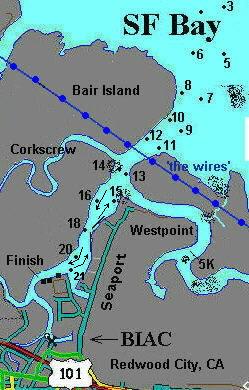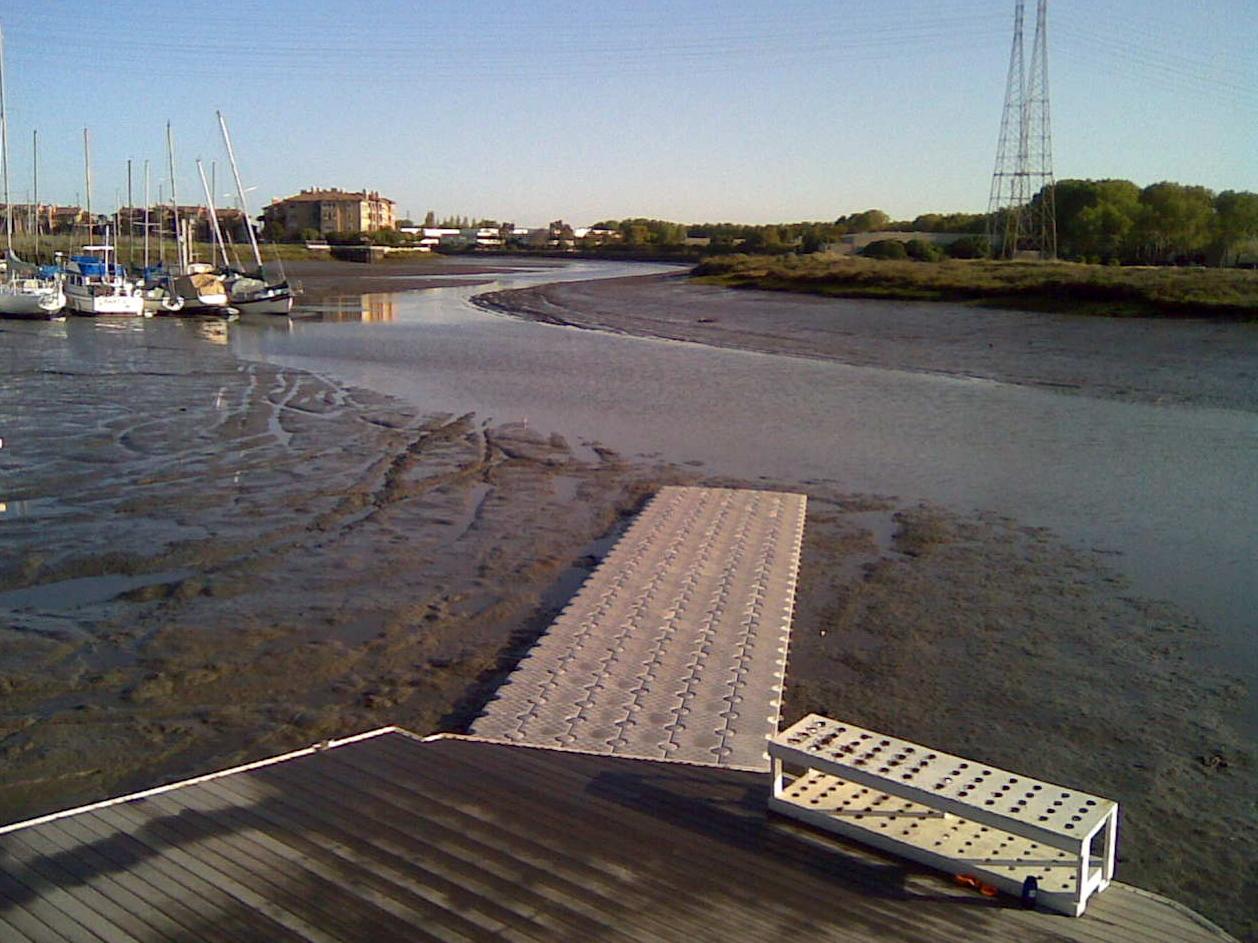






BIAC Aquatic Safety |
|
General: While rowers are not required to use life vests on the water, we have a higher need to simply think about safety. After all, we face backwards, move quickly, sit low on the water, are very focused, and have fragile equipment. A great source for rowing safety is on the US Rowing web site. Another great set of safety information can be found in Mike Sullivan's archives on BIAC general safety and sculling. Honestly, the longer you've rowed at BIAC the more you respect the need for safety. We have needs that exceed the excellent USRA safety standards with one exception - our water never freezes over. Yet year round water access brings new challenges. We share a busy marine waterway with other crew teams, harbor seals, sailboats, powerboats, and freighters. We have at least eight foot tide variations twice a day to compliment changing weather and twilight workout conditions. Experience here will make you a better paddler or rower everywhere. Start by knowing our local conditions: Know the Course!
Areas of high statistical collisions with other shells or fixed objects:
Running markers (odd out, even in) is a good practice to avoid the grey areas of stray traffic, yet hitting a marker is also an unforgiving experience (page 6) . Coxswains need to stay sharp and scullers are advised to look around frequently and perhaps invest in a simple bike mirror. Outer Channel: Once you get past 'the wires' and markers 12 and 11 you are entering the lower San Francisco Bay. The shipping channel continues out to marker 1 and north to San Francisco. Normally you will be protected from the prevailing winds from the wires out to markers 8 and 7. On calm days it is a joy to row out to the middle of the Bay to markers 2 (red) and 3 (green). Sloughs: If you get confident (or bored) enough to venture outside of the deep water channel you will be rewarded with many aquatic adventures and wildlife sightings. See a past edition of our Bair Picayune (page 4-5) or some of our High Tide adventures for more complete descriptions of the Bair Island waters. Our tides turn Bair Island into a topographical marine adventure. Weather and Tides:
BIAC can be challenging at an extreme high tide (+10) where our deck is underwater and at very low tide (-2) where all but one dock is sitting on the mud. Just pay attention and plan accordingly. Wind: The strength and direction of the wind will determine a lot about your workout. BIAC is fairly protected for the first 1000 meters - this can fool all of us. Check the Tides and Wind online from our home page before you row or observe the neighboring flagpoles as you approach BIAC. Usually the winds are calm until around 10:00 when they build in the afternoon from the NNW to 12-15 knots or better. But when sour weather is coming the wind will roar from the South and change everything. Remember to tie shells down while on the racks in addition to respecting conditions while on the water. Be observant of white caps (cresting waves) and land protection. This a learned habit and part of the joy of Bair Island. Likewise a high or low tide will affect the places you can go and the width of some channel bottlenecks. See Know The Course above. Fog: If you can't see (or be seen for) 100 meters please wait until you can. This is a USRA rule and a wise one. This includes daytime use but especially twilight hours and uncoxed shells. Mud: There are many areas around Bair Island that are mud flats during low tide. These shallows are outside of the channel and limited to the sloughs and littoral bay waters. For instance, the Corkscrew Slough is only passable at a tide level of 5 feet or better. Temperature: There is also a "100 Degree Rule" to heed when things get colder. Simply put, if the air + water temperatures are less than 100 degrees (Farenheit), you are safer staying on land and using the ergometers, running, lifting weights, or cycling. Clothing - Wear the Right Stuff: Bicycling gear is great for rowing - it fits well, is highly visible, has longer tails, breathes, protects, and has two way zippers. Modern technical fibers wick moisture away from the skin to give superior comfort when exercising hard. Other articles to seriously consider while rowing: a hat, sunglasses, sunscreen, and water. Scullers may also find a cycling rear-view mirror convenient and safe. The shoes you wear to the dock will be taken off to row, so while they should provide good deck traction and be able to get wet, they don't matter while rowing (unless you need to bail the shell out in the uncommon event of getting swamped). See and Be Seen: Your Safety is in Sight! Additionally, in Fog: If you can't see (or be seen for) 100 meters please wait until you can. Being able to be seen clearly is the first step towards a safe return. BIAC is committed to your safety on and off of the water, and we need your full support. Three simple rules when you are using BIAC in the twilight hours: This applies to all rowers, paddlers, and coaches using the BIAC facility.
We have one of our country's nicest locations for year-round oar and paddle sports. BIAC is used most between the hours of 5:00 am to 7:30 and 4:30 to 7:00 pm. These hours often start or end in the dark, but your safety habits need not be. Please use bow and stern lights unfailingly in our twilight hours or potentially foggy conditions. Batteries are a lot less expensive than any alternative risk. And thanks for using the battery recycling bucket in our hallway! Cold Weather: In addition to the "100 Degree Rule" listed above, here is an advisory about icy conditions on our docks. Be ware: Our docks and ramps are often icy from November through March. We are fortunate to have an eastern facing ramp and docks, but ice still forms on them overnight. Rowers and paddlers alike will find slippery surfaces up to an hour after sunrise. Here is our tried and true way of de-icing and avoiding injury. Basic strategy: Use salt water and sweep with brooms on the ramp and docks. Please use salt water (not fresh!) to de-ice the ramp and possibly the docks. Going over surfaces with the brooms will clear off both debris and fresh water/ice. You should find both buckets and brooms on the docks near the oar racks, near the top of the ramp, or around the rinse areas. Any salt water left on the ramp or docks is ok - it acts as an anti-freeze agent. For environmental reasons, use only salt water to de-ice. No other agents please. BIAC also has a salt water pump at the northern base of the ramp. When this ammenity is working it is a great green way of de-icing and cleaning our ramp and docks. Turn the pump on using the switch on the left rail at the top of the ramp. Spray off surfaces, and remember to turn the pump off when finished so that it can recharge from its solar panel. If it's so cold that even salt water freezes, play it safe and use the ergometers inside. Wear flexible soled shoes and make good use of the ramp's horizontal battens or cleats. Please check the ramp and docks for ice upon both arriving and returning. Incidents: More often than we'd like we run into something. If there is injury or damage, you must report it. This is a chance for us all to learn and to help with our insurance. Please report all injury or damage events using our membership Incident Form to "Secretary at GoBair dot org". The order of responsibility for compliance is: coxswains, coach, stroke, crew. Incident Report forms can also be found at BIAC in the Log Shed next to the Log Book.
|
|
© Bair Island Aquatic Center 2009 -"info at GoBair dot org" |
|


 Cry as some might seeing this severed bow from a 2 year old sweet carbon fiber Vespoli eight, no one was injured. In poor morning lighting the coxswain ran the bow rigger into a hungry harbor piling. Two coaches launches brought everyone to safety and the rest of the shell may be a coffee table in your living room soon.
Cry as some might seeing this severed bow from a 2 year old sweet carbon fiber Vespoli eight, no one was injured. In poor morning lighting the coxswain ran the bow rigger into a hungry harbor piling. Two coaches launches brought everyone to safety and the rest of the shell may be a coffee table in your living room soon.